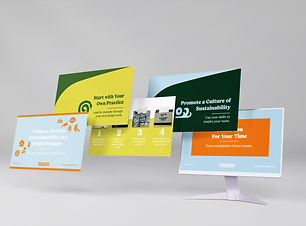
ReDesigning Responsibility:
Closing the Knowledge Gap in Sustainable Design
ReDesigning Responsibility: Closing the Knowledge Gap in Sustainable Design is a Master of Fine Arts thesis that explores how graphic designers can become active advocates for sustainability. Through research, case studies, and visual experimentation, the project investigates how informed design choices - across print, packaging, and digital media - can reduce environmental impact and influence consumer behavior. The goal is to equip designers, students, and businesses with accessible tools and strategies to integrate eco-conscious practices into their creative workflows, transforming sustainability from an afterthought into a core principle of modern graphic design.

The
Problem
1
Sustainable design is no longer optional - it’s essential. Yet, within the graphic design industry, sustainability is still treated as an afterthought rather than a core principle. Many designers are aware of environmental challenges, but few have the tools, education, or industry support to integrate eco-conscious practices into their workflows.
From material waste in print production to energy-heavy digital design, the consequences of inaction are significant. This project began with one key question: How can graphic designers better engage with sustainability in practical, impactful ways?
Research
& Findings
2
Through case studies, literature reviews, and visual analysis, the research revealed several key insights:
-
Design Drives Change: Lush’s packaging-free products, Good On You’s transparent ethical ratings, and Nespresso’s recyclable pods all demonstrate that intentional visual strategies can influence consumer behavior and brand credibility.
-
Education is Key: A lack of formal sustainability training leaves designers unprepared to make eco-friendly choices.
-
Visual Communication Matters: Clear, trustworthy branding and storytelling build consumer trust and help avoid “greenwashing.”
-
The Designer’s Role: Designers are not just service providers—they are advocates who can shape systemic change.
-
This research shaped the foundation for a solution-oriented design campaign.
The
Process
3
The project, titled ReDesigning Responsibility, was developed through an iterative design-thinking approach:
-
Moodboards & Concept Development: Guided by sustainability values—warmth, accessibility, and intentionality.
-
Modular Design Thinking: Every deliverable (brand identity, microsite, presentation deck) was designed to be adaptable and scalable, ensuring long-term usability.
-
Research-Driven Decisions: Every typographic choice, color selection, and layout was evaluated for both aesthetic appeal and its ability to communicate environmental responsibility
The
Final Work
4

Branding Package
The visual identity uses a leaf-and-speech-bubble logo, symbolizing growth and conversation. Earth-toned colors and balanced typography were selected to build trust and convey authenticity.

Microsite
The campaign’s digital hub, designed for performance efficiency and powered by renewable-energy hosting, provides downloadable toolkits, case studies, and interactive resources.

Presentation Deck
A seven-step framework equips designers and educators with actionable strategies for integrating sustainability into their practice.
Design
Commentary
5
Every design decision connects back to the research:
-
Muted, natural palettes build consumer trust and authenticity.
-
Modular layouts reflect adaptability - a core principle of sustainable systems.
-
Simplified information hierarchy was inspired by the Good On You interface, making complex sustainability concepts easy to understand.
-
Open-source resources address the educational gap, meeting designers where they are and inviting them to take action
Call To
Action
6
Sustainability is not a constraint—it’s a creative opportunity. ReDesigning Responsibility is more than a campaign; it’s an invitation for designers to become intentional stewards of impact, message, and meaning. Explore the resources, adapt them, and help redefine what responsible design looks like today.
To learn more about ReDesigning Responsibility please visit the site for the proper resources to help educate yourself and others.

Full Thesis Document
Explore all five chapters of ReDesigning Responsibility: Closing the Knowledge Gap in Sustainable Design below. Here, you can access the complete thesis and view the three final deliverables - each developed as a conceptual solution to the identified challenges in sustainable design.











